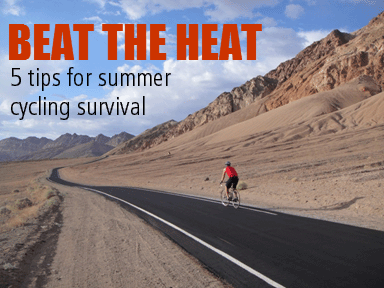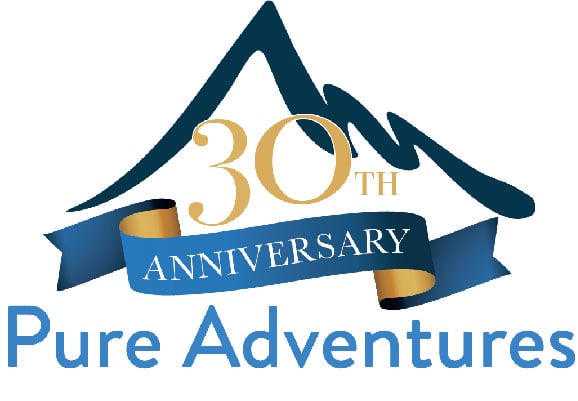
Depending on where you live, summer cycling can feel like you’re in sizzling Death Valley – unless of course you live in Missoula, Montana, where it was hotter than Death Valley last week. Of course, while Death Valley is sometimes regarded as the hottest place in the United States, the winter temperatures are quite moderate and perfect for cycling, as cool and comfortable as a spring day. That’s why Pure Adventures arranges departures to this legendary destination between November and March.
That said, summer cycling has its own challenges, most related to avoiding heat related injuries. Keep your cool with these 5 tips from cyclists and bike touring veterans.
Hydrate before you even get on your bike.
“Hydrating before pedaling helps you avoid drying out on the road,” advises Bicycling magazine’s Marianne McGinnis. Ideally, drink 12 to 16 ounces of water four hours before you plan to ride, drinking another 12 ounces in the two hours before you hop on.
Save the black clothing and accessories for cool weather riding.
Gordon Fisher is a bike commuter in the California desert, where the temperatures can soar above 120F. Fisher opts for a white helmet with plenty of vents and light colored, loose-fitting clothing. As a commuter he wears t-shirts and khakis, but the same benefits could be gained from baggy MTB shorts and a light weight jersey.

Start your rides early in the day.
“Riding through the midday heat is the surest way to fry your brain and body during a bike tour,” warn Friedel & Andrew, the bloggers behind the bike touring blog Travelling Two. If you can, start your training or your tour day earlier in the day to avoid the harsh midday sun.
Ditch the backpack, install a rear rack.
“A heat wave is also a good incentive to take that load off your back,” says Portland-based cycling activist Elly Blue. If you’re in the habit of wearing a backpack for either commuting or carrying your gear during your cycling vacations, break the habit by installing a rear race and panniers on your bicycle.
Watch for danger signs that you’re getting too hot.
Even the most experienced cyclists with the best planning and hydration strategies can make mistakes by either timing their rides wrong or riding longer than they should. That’s why when you’re riding in the heat, you need to constantly monitor your body to ensure that you’re keeping cool. “Heat stroke can happen quickly and it can be fatal,” warns Laurel-Lea Shannon, an avid cyclist and editor of Women’s Cycling. Dizziness, fatigue, nausea, vomiting, muscle cramps and headaches are all signs of heat stroke. “If you experience any of these symptoms, stop cycling, find some shade to lay down in, and replenish your fluids,” advises Shannon.
While cycling in the summer has it’s challenges, so do cycling in the winter! Skip the snow and check out Pure Adventures’ Death Valley Bicycling Discovery Tour, a new supported self-directed tour that lets you ride in one of the most amazing places on earth. Want to learn more about Death Valley? Here are 8 weird things you probably didn’t know.
